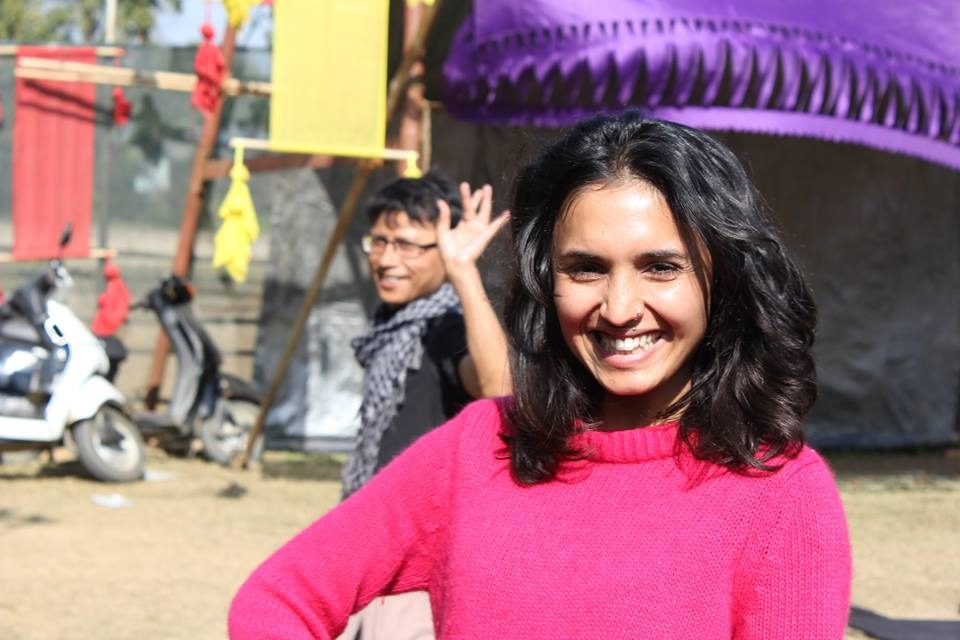By James Khangenbam, 29/06/2023 Imphal :
“The dance form calms down our daily thinking, our daily consciousness. When we calm down our daily consciousness our body and mind became one. Mind, body and spirit transformation takes place. It could be in silence you can do with preferred music too”, says Agu Tara the facilitator of Butoh Dance when she was conducting workshop in Manipur
“I listen to the resonance of the tree and I sink into the resonance and I become the tree and I forget that I am a human. If you listen to the resonance you will dance all time and your source of movement is by listening to the resonance.
The Butoh workshop in Manipur at SACH was all about learning technique to enter into the door. Learning to feel subtle energy. Hugging a tree to feel the intensity of the heat, texture and smell. Same goes with rock. We were given experiential knowledge not textual. If I want to feel the resonance of the tree we stay with the tree, stand and feel the wind blow. Smell, touches the water, even human to human. Human have sound, smell, heat, intensity. There are innumerable materials you just have to open yourself to listen into that resonance it is a practice to open up”, says Thiyam Chaoba a participant who is a film maker and a meditation practitioner.
Agu Tara – the 35 year old facilitator of Butoh dance was trained in the art form at Subbody Butoh Foundation, Dharamsala, H.P. She has been practicing for the last three years and hosted the 1st International Butoh festival in New Delhi. She came down to Manipur through Surjit Nongmeikakpam, a reknowned contemporary dancer and introduced the Japanese originated dance form in Manipur.
Butoh is said to have originated after the Second World War in Japan. Tatsumi Hijikata and Kazuo Ohno are the known legends. It appeared as a reaction against the contemporary dance scene in Japan, which Hijikata felt was based on imitating the West & restricted to self –expression only. Also, witnessing & resonating strongly with the before- after war conditions in Japan & losing his sister, (who served as a prostitute in the war) is believed to give birth to Butoh. Kazuo Ohno also fought in the war and lost many of his soldier friends. Both of them are legends; they introduced Butoh to the world.
At first, Butoh came about as revolution of the body. Hijikata researched constantly in the darkness of his body; hidden tendencies, hidden memories of childhood and resonated with weakened bodily conditions like that of leprosy existing around him. He meditated for long and discovered that his dead sister was living inside him. This gave birth to weakened body butoh. Butoh differs from other movement art forms because it focuses on the weakness of the body rather than the strength.
He danced her repeatedly. He also wrote two choreographic butoh scores ‘Quiet House’ and ‘Sick Dancing Princess.’ In ‘ Quiet House’ he danced his dead sister, however, he still felt bound by his independent trauma, by Self; and to go beyond this bind he wrote ‘Sick Dancing Princess’ but was not able to share his dance. He died young at the age of 57.
Over the years, Butoh has been interpreted and practiced differently all across the world. Butoh is not self-expression. It is Dance of Life. It is ‘Art of Shisha’ ; where ‘Shisha’ are the spirits of the dead in Japanese.
‘Shisha transform their shapes quietly yet infinitely. It is not rare that they borrow the shapes of things on the earth with unexpected nonchalance.’
Therefore, a butoh dancer takes the form of spirit and opens infinite transformation, can become anything and everything very easily and nonchalantly.
